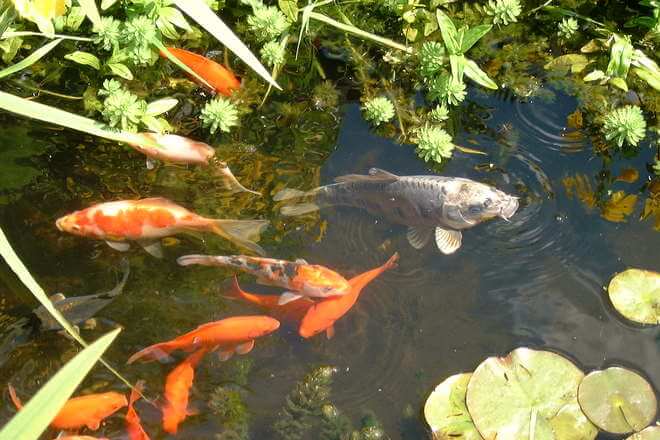Last week, we talked you through the building of a pond, from measuring out the area, to digging and laying down the pond liner and filling with water. This week, we’ve got a handy guide to making your pond come alive with aquatic plants and even fish.

A Guide to Pond Plants
No pond would be complete without some aquatic plants, otherwise it would just be an oversized paddling pool! The good news is that most pond plants require little maintenance, but some thought must be put into what kind of plants you want for your pond, depending on its depth and surface area. Follow this guide and you’re sure to create a beautiful oasis of tranquility at all times of year.
Lillys and other floating plants are great for the ecosystem of any pond. They can prevent algae from forming over the top of your pond as it cuts down on the amount of sunlight entering the water.
As well as floating plants, there are two other key types of pond plant: submerged and marginal. As the name suggests submerged plants are submerged in the water – marginal plants live the the shallow areas on the shelf of your pond and protrude from the water.
It is important to have plenty of submerged plants in your pond as these help oxygenate your pond. Good choices include Callitriche Stagnalis, Marsilea Quadrifolia and Sagittaria Graminea if you want something that flowers. For a smaller pond, it is best not to include varieties that spread too vigorously, and keep the plants in containers rather than allowing them to root down in the sediment.
For marginal plants, Blue Irish, the Chameleon Plant and Brookline are all good choices. Many varieties of marginal and pondside plants are good at attracting wildlife as well as shading and protecting the edges of your pond. Be sure to read the specifications as to what kinds of plants are best for what depth of water.
Fish
Once you’ve filled your pond with vegetation it‘s time to fill the pond with fish. Now fish aren’t necessary for a beautiful pond, in fact for smaller ponds and the miniature pond in a pot it is advisable NOT to stock with fish as the space may be too small, and for larger fish such as coy or carp quite a large pond is required if they are to lead a healthy life. In addition it is best to wait around a month to allow the vegetation to settle before adding your fish. When you do add fish, ensure they’re given enough room to grow and move about – for pond with a surface area of 10m squared, for example, you should really be adding no more than around twenty fish. Obviously, with smaller fish you will be able to add more and with larger fish, less.
In the next installment, we’ll cover the basics of caring for your pond and its inhabitants once it’s set up.
–
 Charlie works in the Primrose marketing team, mainly on online marketing.
Charlie works in the Primrose marketing team, mainly on online marketing.
When not writing for the Primrose Blog, Charlie likes nothing more than a good book and a cool cider.
To see the rest of Charlie’s posts, click here.